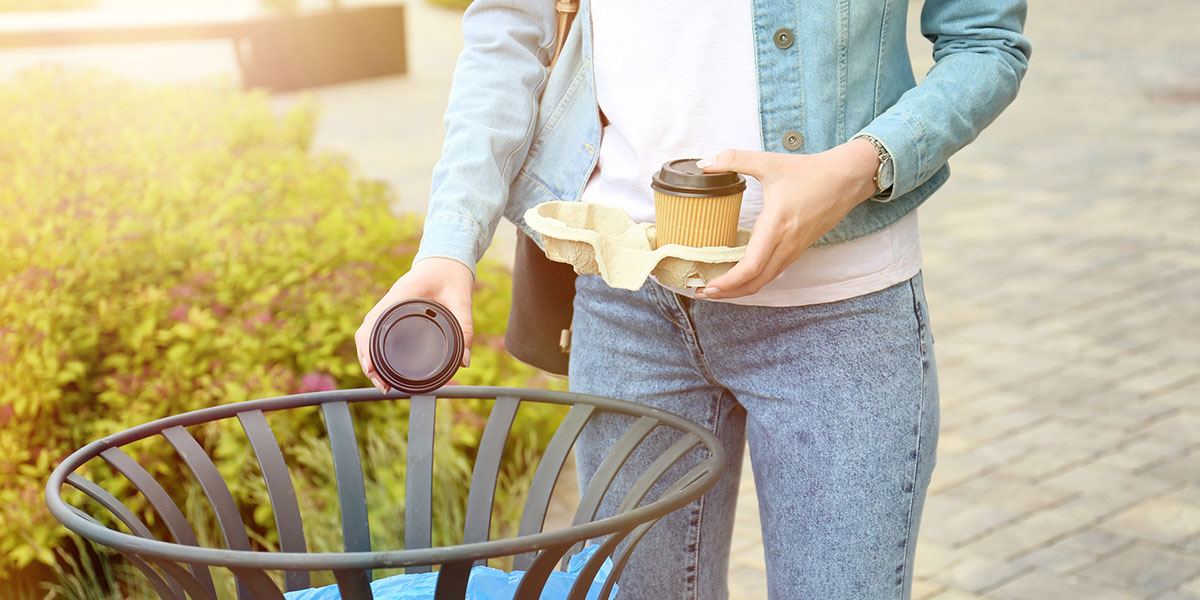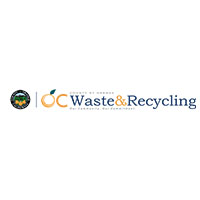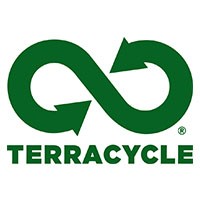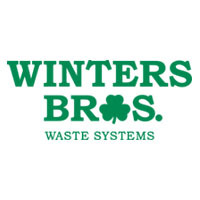
Where does all the trash go? Over half of the trash Americans produce ends up at the dump compared to 35% of waste that is recycled or composted, according to the Environment Protection Agency.
Your trash can end up in a few different places depending on what you’re throwing away and the disposal options available in your area. Check out the steps below to see how your trash goes from the shelves to your trash bins and beyond.
Step 1: A manufacturing facility creates a product and sends it to the store or distribution facility.
Step 2: You buy the product, take it home and eventually throw the packaging or used materials away.
Step 3: You fill your garbage bin up throughout the week and roll it to the curb the night before trash collection day.
Step 4: The garbage company comes the next day, dumps your trash into the truck and drives away.
Step 5: Your banana peels, used paper towels and cardboard boxes usually go to a transfer station where the garbage is sorted and sent either to the landfill, a recycling center or a composting facility.
From there, your trash can take a few different routes.
Depending on what gets tossed, your waste can either decompose at the landfill or get reused in some way.

If you toss something in your regular garbage can, it will eventually end up in the landfill. This means if you accidentally throw recyclable materials in, they won’t be separated out. There are different types of landfills, but most residential waste ends up at the municipal solid waste (MSW) landfill. This is the typical image that comes to mind when you think of a landfill site.
Kevin Gaxiola with Orange County Waste & Recycling says the following steps occur when trash is brought to the OC landfills:
Step 1: Waste trucks drive to the active fill area where an orchestrated operation of disposal takes place.
Step 2: Waste inspectors look through loads to ensure no hazardous waste or unacceptable items are buried.
Step 3: Trucks are directed to specific locations at the fill area to ensure the greatest compaction possible.
Step 4: Once the trash is unloaded, heavy equipment operators push the trash into place and compact it.
Step 5: The landfill is covered with soil or tarps at the end of the day.
Modern landfills have layers to ensure environmental safety, including a liner with a drainage system, gas collection system and a layer for trash. When the landfill is full, the trash is contained by creating a barrier of compacted clay and synthetic material. Then, topsoil is added. What was once a landfill can now become a park, a waste-to-energy project site or a wildlife habitat.
Gaxiola says landfill space is finite, making it a valuable resource. He says it’s likely that there will never be another site constructed in Orange County, California, which is probably the case for many places across the country.
“Landfills must be used wisely, which includes residents and businesses taking responsibility for understanding their role in the waste stream and diverting or recycling materials that do not have to go to the landfill.”
Kevin Gaxiola, Staff Specialist | OC Waste & Recycling

Some cities send MSW to a resource recovery plant instead of the landfill. Resource recovery plants are highly engineered facilities that burn trash. These plants use a controlled burn process and closely monitor the byproduct. The emissions go through a series of processes that “clean” them to make them safe enough to emit into the atmosphere. According to Steven Joseph with Winters Bros Waste Systems, the decision to send trash to the landfill or a resource recovery plant can be driven by economics. The more cost-effective rate for disposal drives the flow of trash into their facilities.
More than 34 million tons of our waste, almost 13%, is combusted and used for energy.

While most waste in landfills take several to hundreds of years to decompose, recyclable items like paper and plastic, or even things like electronics and clothes, can be remade into new products. This is more beneficial to the environment than letting them rot and create greenhouse gases or using up valuable materials to create net-new products.
“Once a product is placed in a curbside recycling bin for pickup, it begins a long process of sortation, separation, cleaning (if applicable) and processing before it can ultimately be recycled into a new product. To ensure that otherwise unrecyclable materials like single-use packaging stay out of landfills and our shared environment, consumers are encouraged to sign-up for one of TerraCycle’s many free recycling programs that address this type of hard-to-recycle waste.”
Sue Kauffman, North American Public Relations Manager | TerraCycle, Inc.
If you properly separate and recycle things like soda cans and junk mail from your other trash, you likely throw it all into one bin. This is called single-stream recycling. All the items in your single-stream recycling can go to a Materials Recovery Facility (MRF) where each type of material – plastic bottles, paper, cans, etc. – is separated. Once categorized, they’re shipped to a recycling facility and processed into new material. Then, the new material goes to a manufacturing facility where it can be made into another product that you buy, and the cycle continues.
Common Products Made from Recycled Content |
||
| Aluminum cans | Car bumpers | Carpeting |
| Cereal boxes | Egg cartons | Glass containers |
| Laundry detergent bottles | Nails | Newspapers |
| Paper towels | Steel products | Trash bags |
Most construction materials, like concrete, wood and asphalt shingles, can be recycled at a local construction and demolition (C&D) recycling facility. These centers use a series of belts and sorting systems that automatically sift through materials in addition to a hand-picking process. Once sorted, they are sent to other facilities that turn them into new materials to be used again.
Research options in your area to see which debris are accepted. In some cases, you may have an easier time finding facilities that accept specific material types as opposed to taking them all to the same place.
Here are some examples of what different building materials can be recycled into:

Even organic waste, like food scraps and landscaping debris, can be recycled. Food waste can be composted or used as a renewable energy source.
Rotting food releases methane, a greenhouse gas and top contributor to climate change. Composting has become an increasingly popular solution to divert food waste from the landfill to prevent methane buildup and instead reuse it to fuel gardens and other green spaces. This process, which can take months, involves breaking materials down into humus, the organic compound of soil. Compost is rich in nutrients and can be used for landscaping, horticulture and agriculture.
“Non-edible food waste should be diverted to composting operations to the greatest degree possible. Keeping food waste and green waste out of the landfills reduces the volume of methane produced. It also preserves space and expands the life of the landfill. Residents are encouraged to contact their local waste hauler or recycling coordinator to discuss any food recovery or composting programs.”
Kevin Gaxiola, Staff Specialist | OC Waste & Recycling
One option is to compost at home and create a compost pile either in your yard or in a closed bin. Then, you can use the organic material created in the pile to help your garden flourish. If you don’t want to do the work yourself, see if your city offers a curbside composting program. If so, you’ll receive a sealed pail to fill with food scraps throughout the week. Then, you put the pail out with your other trash bins on your regularly scheduled garbage collection day, and your food scraps will make their way to a local composting facility. Some cities will even return the organic material once the composting process is complete so you can use it in your yard.
“If food waste is properly composted, it not only reduces the methane released by food rotting in landfills, but it also returns vital nutrients back to the soil, just like recycling keeps raw materials in use.”
Sue Kauffman, North American Public Relations Manager | TerraCycle, Inc.
The anaerobic digestion process uses bacteria to break down food waste. As this happens, methane is released, captured and generated into energy, like electricity and heat.
It’s important to know how long it takes different items to decay in the landfill so we can try to reduce our consumption of these materials or do our best to find ways to recycle and reuse them. Here are some everyday items and the amount of time they take to decompose.
How Long Does Trash Live? |
|
|
|
|
|
|
|
|
|
|
|
|
|
|
|
|
|
|
|
|
|
|
|
|
|
|
|
|
|
|
|
|
|
|
|
|
|
|
|
|
|
|
|
|
|
|
*Decomposition rates from The Balance Small Business.
“Materials in landfills do not break down quickly – if at all – and can sit for years as they slowly decompose. Food waste in landfills will also release methane, a powerful greenhouse gas. Diverting waste for reuse and recycling saves space in landfills, but more importantly, it avoids using natural resources that would otherwise be needed to make new products from virgin materials. Plus, it reduces greenhouse gases.”
Sue Vang, Engagement and Zero Waste Program Manager | University of California, Davis
The next time you throw something away, think about where it’s going and how long it will be there. Can it be reused in some way? Is there a way to divert it from the landfill? Your decision could save the environment and valuable landfill space.
Joseph backs up this claim. He says land is finite, and with urban sprawl, the waste industry and communities across the nation are constantly having to find better ways to handle trash.
“The best way to manage trash is to create less of it. The predominate way to do that is to recycle materials and make sure manufacturers think about the recycling process when creating new products. Otherwise, we’ll run out of places to send our trash.”
Steven Joseph, Transfer Station Director | Winters Bros Waste Systems
Mark Lichtenstein with the SUNY College of Environmental Science and Forestry says while recycling is a better option than sending trash to the landfill, it’s still a solution we’ve created to handle waste. He says the concept of waste is a human-created construct, so we create solutions to get rid of it. But there really isn’t such a thing as “away,” so we need to focus on keeping materials out of the waste stream.
“We need to make conscious decisions about what we purchase. When you buy something, you may look at the price and the ingredients or materials used to help you decide whether or not you’re going to purchase it. We also need to look at the packaging when we make our buying decisions. Was it made with recyclable materials? Are there alternative products that don’t use packaging? We want to make sure we’re reducing the amount of trash that ends up in the waste stream.”
Mark Lichtenstein, Chief Sustainability Officer | SUNY College of Environmental Science and Forestry
If you’re not sure where to start, take small steps to reduce your waste at home. Learn which items you regularly use can be recycled or try to find biodegradable alternatives. Do your best to reuse items or buy things second-hand to prevent creating further waste.
Recommended reading: Zero Waste vs. Zero Landfill





